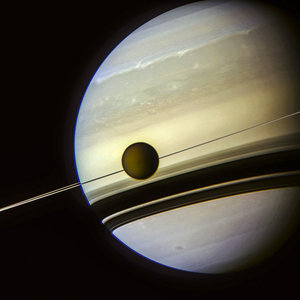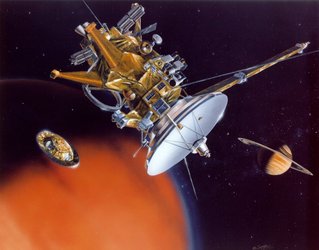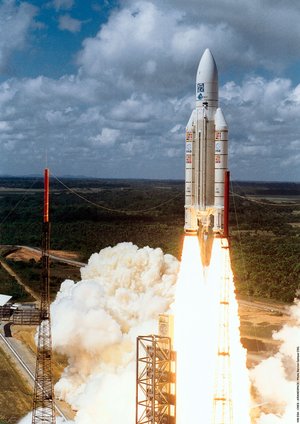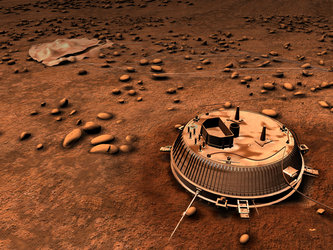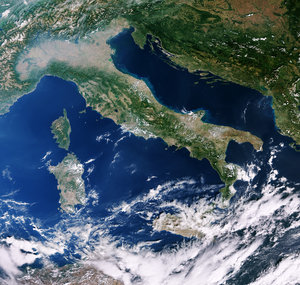The surface of Titan...
This is a 'radar' image of the surface of Titan, taken on 26 October 2004, when the NASA/ESA/ASI Cassini-Huygens spacecraft flew approximately 1200 kilometres above the surface and acquired radar data for the first time.
It reveals a complex geological surface thought to be composed of icy materials and hydrocarbons. A wide variety of geological terrains can be seen on the image. Brighter areas may correspond to rougher terrains and darker areas are thought to be smoother.
A large dark circular feature is seen at the western (left) end of the image, but very few features resembling fresh impact craters are seen. This suggests that the surface is relatively young. Enigmatic sinuous bright linear features are visible, mainly cutting across dark areas.
The image is about 150 kilometres wide and 250 kilometres long, and is centred at 50 degrees North, 82 degrees West in the northern hemisphere of Titan, over a region that has not yet been imaged optically. The smallest details seen on the image are about 300 metres.
The data were acquired by the Synthetic Aperture Radar mode of Cassini's radar instrument. In this mode, radio signals are bounced off the surface of Titan.
Credits: NASA/JPL















 Germany
Germany
 Austria
Austria
 Belgium
Belgium
 Denmark
Denmark
 Spain
Spain
 Estonia
Estonia
 Finland
Finland
 France
France
 Greece
Greece
 Hungary
Hungary
 Ireland
Ireland
 Italy
Italy
 Luxembourg
Luxembourg
 Norway
Norway
 The Netherlands
The Netherlands
 Poland
Poland
 Portugal
Portugal
 Czechia
Czechia
 Romania
Romania
 United Kingdom
United Kingdom
 Slovenia
Slovenia
 Sweden
Sweden
 Switzerland
Switzerland


























